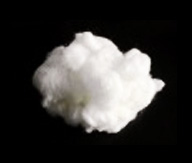| Home > Material > Commonly used Materials > Nylon |
Nylon |
Rotomoulding machinery are widely used in various industries and they can process a number of material. Among the various commonly used rotomoulding material, Nylon is the most preferred one. It belongs to the thermoplastics family of polyamides. This synthetic fiber is the result of petroleum derivatives which finds application in various products used in daily life. The properties of light in weight and immaculate tensile strength are the two primary features of nylon. Also, it is a durable material having good resistance to damage.
Use of Nylon in Rotational Moulding Process:
 This thermoplastic silky material is exclusively preferred in molding processes for its high temperature resistance and stiffness. It also exhibits good resistance to reactions with chemical compounds or solvents. Another very important property of nylon is its affinity for absorbing water. This synthetic compound is highly hygroscopic and acts as a sponge, absorbing any moisture in the environment. This moisture acts as a plasticizer or intermolecular lubricant and dries up during the molding process. Three engineering-grade polymers of carbon, namely Nylon 6, Nylon 11 and Nylon 12 are extensively employed in rotomolding processes. Out of these, Nylon 6 offers the highest service temperature, lower co-efficient of thermal expansion and is least costly, hence it is always the first choice. Nylon 11 and Nylon 12, on the other hand, are relatively costly but are sometimes chosen over Nylon 6 due to their lower density, lower absorption rate and dimensional stability. This thermoplastic silky material is exclusively preferred in molding processes for its high temperature resistance and stiffness. It also exhibits good resistance to reactions with chemical compounds or solvents. Another very important property of nylon is its affinity for absorbing water. This synthetic compound is highly hygroscopic and acts as a sponge, absorbing any moisture in the environment. This moisture acts as a plasticizer or intermolecular lubricant and dries up during the molding process. Three engineering-grade polymers of carbon, namely Nylon 6, Nylon 11 and Nylon 12 are extensively employed in rotomolding processes. Out of these, Nylon 6 offers the highest service temperature, lower co-efficient of thermal expansion and is least costly, hence it is always the first choice. Nylon 11 and Nylon 12, on the other hand, are relatively costly but are sometimes chosen over Nylon 6 due to their lower density, lower absorption rate and dimensional stability.
Production of Nylon:
Nylon can be chemically processed by ring opening polymerization where a molecule with a cyclic shape is opened and flattened. Industrially, it is prepared in a mass scale by reacting hexanedioxyl dichloride and diaminohexane.
Types of Nylon:
Nylon is commercially available as a homopolymer, co-polymer or reinforced. They are also blended with other engineering plastics to ameliorate certain facets of performance.
 A Few Types of Nylon Commonly Available Commercially:
A Few Types of Nylon Commonly Available Commercially:
- Nylon 6
- Nylon 66
- Nylon 6/6-6
- Nylon 6/9
- Nylon 6/10
- Nylon 6/12
- Nylon 11
- Nylon 12
Physical Properties:
- Tensile strength : 90 - 185 N/mm2
- Notched impact strength : 5.0 - 13.0 Kj/m2
- Thermal coefficient of expansion : 80 x 10-6
- Max. continued use temperature : 150 - 185 oC (302 - 365 oF)
- Melting point : 190 - 350 oC (374 - 662 oF)
- Glass transition temp. (Nylon 66) : 45 oC (113 oF)
- Density : 1.15 g/cm3
- Electrical conductivity (σ) : 10−12 S/m
- Thermal conductivity : 0.25 W/(m·K)
|
| |
| |
 |
